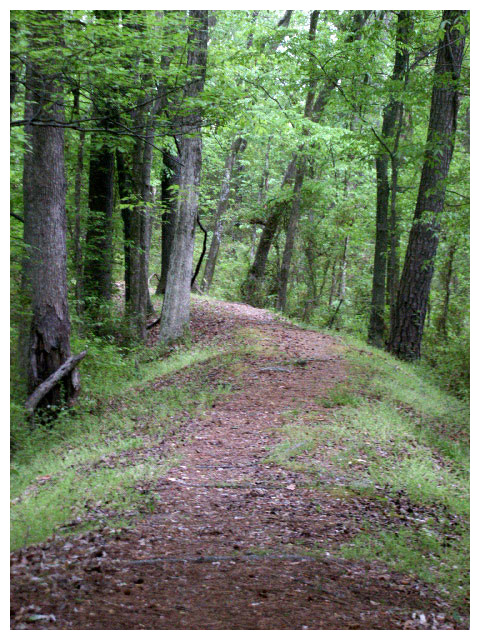 The Roanoke Canal Trail and its contributing resources tell the history of transportation on the Roanoke River from the early 1800s to today.
The Roanoke Canal Trail and its contributing resources tell the history of transportation on the Roanoke River from the early 1800s to today.
Segments of the canal that remain intact today include portions of the 39 foot wide channel, its 10 foot wide tow path, the original aqueduct and one of the stone culverts. In 1976, the canal, the tow path, and the canal structures were added to the National Register of Historic Places. The towpath and bottom of the canal provide pedestrian access between the communities of Roanoke Rapids and Weldon, North Carolina.
The Roanoke Canal Commission, Inc. was chartered in 1984 to “promote, develop and maintain the natural beauty and historic area that is part of the old Roanoke Navigation Canal in Halifax County, North Carolina.” The Commission has remained intact over the years and oversees the management of the Canal Trail through a variety of partnerships.
Visitors using the Canal Trail can experience engineering feats and explore life along the Roanoke Valley as it was in the early 1800s. The canal and the supporting structures are a living legacy to the early years of transportation, the engineering profession, and a developing way of life along the Roanoke River.
Wildlife on the Roanoke Canal Trail
 There is a wonderful variety of wildlife and plants that visitors can enjoy when hiking or cycling the Roanoke Canal Trail. Deer, fox and other wildlife are residents of the wooded areas along the trail and the Roanoke River. Different plants in the area include the Atlantic ispyrm, Lewis heartleaf, Sessile-flowered trillium and stinging nettle.
There is a wonderful variety of wildlife and plants that visitors can enjoy when hiking or cycling the Roanoke Canal Trail. Deer, fox and other wildlife are residents of the wooded areas along the trail and the Roanoke River. Different plants in the area include the Atlantic ispyrm, Lewis heartleaf, Sessile-flowered trillium and stinging nettle.
The Roanoke Canal Trail also serves as a site on the North Carolina Coastal Plains Birding Trail, which is an effort to direct birding tourists to the region and help stimulate sustainable economic growth in these communities. Birders and nature-lovers can immerse themselves in regular, year-round sightings of Bald Eagles, Osprey, Hawks, Pileated woodpeckers, White-Breasted Nuthatches, Barred Owls and Great Blue Herons. Spring and summer months visitors may discover the state-threatened Cerulean Warbler, Mississippi Kites, Swainson’s Warbler and other Neotropical Songbirds such as Summer and Scarlet Tanagers, Wood Thrush, Hooded and Prothonotary Warblers, and other hardwood forest species. During winter months, flocks of Cedar Waxwing are often present, as well as less common species such as Brown Creeper, Winter Wren, Fox Sparrow, Red-Headed Woodpeckers and other forest species.


